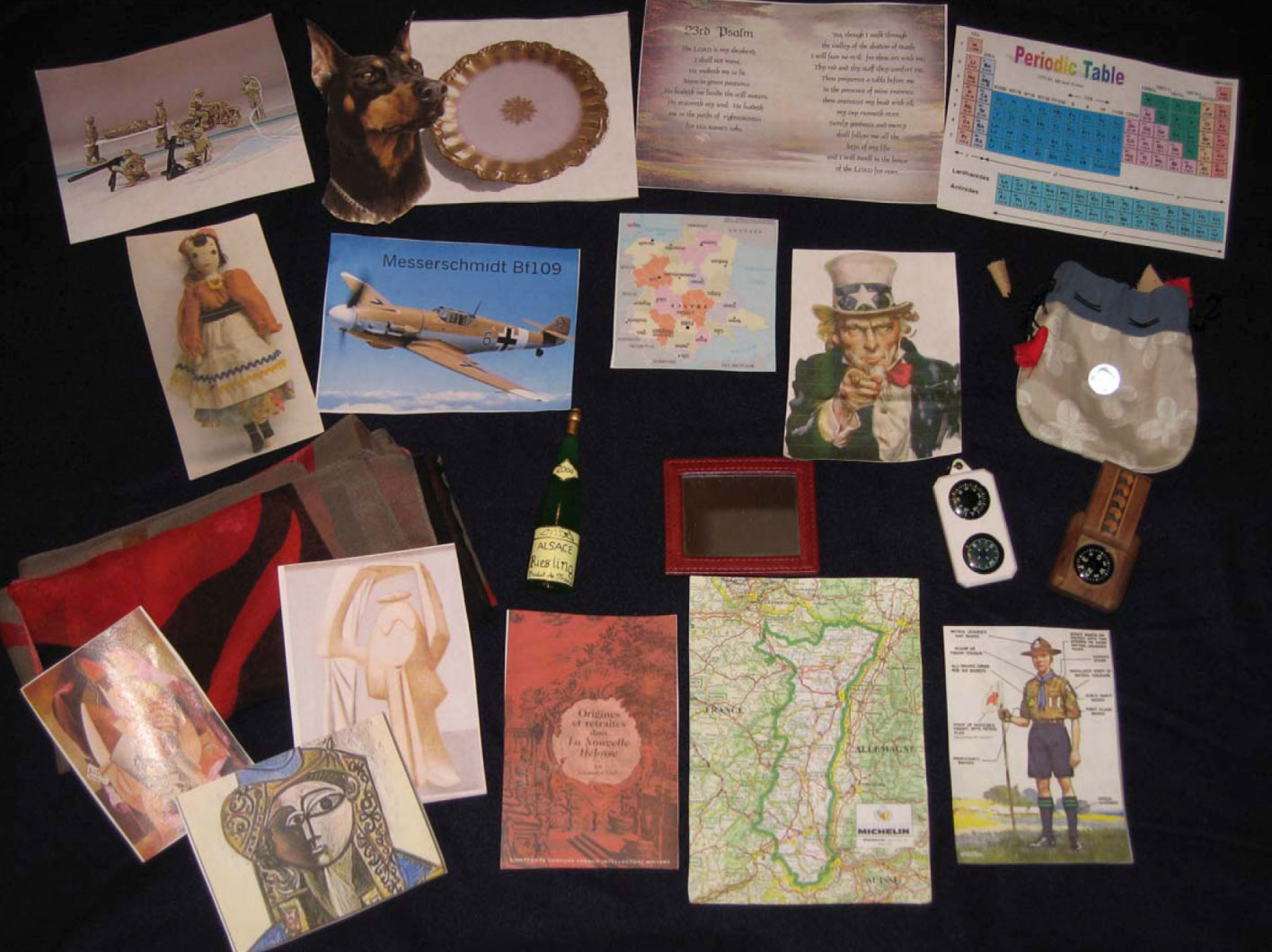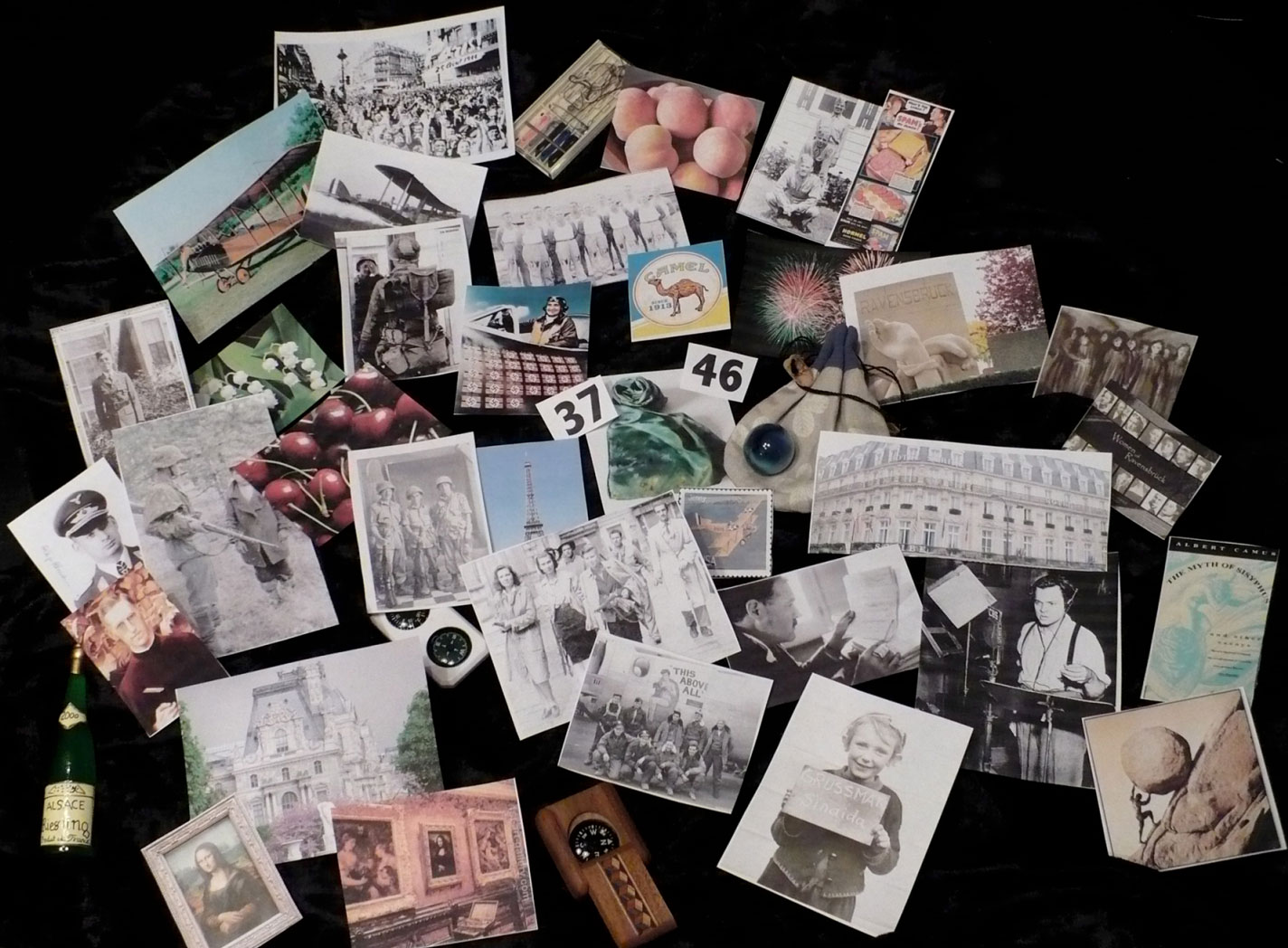Denise Ousley-Exum, PhD developed the Brown Bag Exam to address the disconnect that she and her students were experiencing between instruction and assessment. She had strategies that engaged students in reading and writing and used instruction to connect the literature to students’ lives.
However, she lacked assessments that matched the activities students had enjoyed. She knew that the majority of students had gotten the reading, but that same majority of students were failing the test. Her tests showed what students didn’t know, not what they had read, learned, or gained. Dr. Ousley-Exum explains a creative way to assess learning with Brown Bag Exams.
About Brown Bag Exams
A Brown Bag Exam uses found objects and images to help students activate prior knowledge and creates a framework for students to express their understanding. Students work individually and in collaboration to create concrete connections between the reading and surprise Brown Bag items. Unlike traditional assessment, the Brown Bag Exam is a joyful experience, an exam filled with conversation, idea exchange, laughter, and learning.
A typical Brown Bag Exam follows five steps: First, students open their bags, puzzle for a few seconds over the item(s), and then brainstorm a list of the connections they see among their Brown Bag item(s) and the reading. Next, students form triads so that they can present their Brown Bag surprise to their peers, share initial insights, and add the thoughts of two new readers. This portion is often the most spirited, and is often punctuated by “Oh! And what about this?” or “Yes! Yes! I thought that too.” As a teacher lucky enough to eavesdrop on Brown Bag conversations, I am struck by the depth and enthusiasm with which students talk about ideas and items — ideas and insights that I am unlikely to learn from a traditional test, essay, or even a whole class discussion.
Once the students have brainstormed by themselves and discussed ideas with peers, we move on to the third stage of the exam: passages. The students find at least two passages from the novel that connect to items. Students asking each other for the locations of specific events punctuate this portion of the exam: “When does Pierre give Henry the doll?” As a teacher, the passage portion of the Brown Bag Exam highlights the collaborative nature of both reading and learning.
The final steps of the activity ask students to single out a specific aspect of the entire Brown Bag Exam and describe that aspect’s impact on personal learning. Once students have had a few minutes to complete the final step, they share these individual perspectives with the entire class.
I have had the pleasure of the Brown Bag experience for Under a War-Torn Sky (UWTS) with multiple groups: students (from middle schoolers to graduate students) teachers and administrators. In fact, I have used UWTS for faculty in-services with the Brown Bag Exam as the culminating experience. Students at all ability levels benefit from the Brown Bag Exam because it allows for collaboration and conversation.
Brown Bag Exams and historical fiction
One of the aspects of historical fiction that makes it especially suited for the Brown Bag Exam is the immediate connection that BBE items have to people, places, and events. The BBE allows for both time and conversation — two elements necessary for thinking, but often completely absent in traditional assessment.
For example, in the BBE for Under a War-Torn Sky by L.M. Elliott, one of the bags contains images of the 23rd Psalm and the Periodic Table of the Elements. After sharing where each of these items occurs in the novel, a student once commented that these items explain Henry’s complex connections to faith and science. She went on to add that they also connect his parents — Lilly as a woman of faith and Clayton as a man of the elements. Inspired by this line of thinking, another student added that WWII itself was a complex (and often catastrophic) combination of faith and science, which led to later discussions of war as a complex catalyst for invention.
Because the BBE encourages thoughtful collaboration, events in UWTS inspired my students to explore aspects of WWII that they had never considered. These connections are one of the primary reasons that historical fiction is such an exceptional resource in the classroom and why historical fiction works so well with an alternative assessment like the Brown Bag Exam. Students will remember events from a BBE long after their other test scores have been forgotten.
Download and print this Brown Bag Exam graphic organizer.
Creating a Brown Bag Exam
Step One:
Open your bag!
Step Two:
List all possible connections between your item(s) and the novel. Items may (or may not) fall into the following categories: plot character theme all of these setting symbol event something else entirely
The item(s)in your bag might not even be in the novel. Start swimming on the surface then take a breath and go deeper… Be open to thinking literally and metaphorically. Use the first box to make a bulleted list of all the connections you see.
Step Three:
Get into triads.
Each person shares connections and then asks group members for the connections they see.
Please list all additional connections in the second box.
Step Four:
Find at least two passages from the text connected to your brown bag item(s)
Copy them into the third box (ellipses are encouraged). Provide enough of the passage so that you (and others) can find it. Please be sure to include page numbers!
Step Five:
Choose one idea you’d like to share with the class about your brown bag item(s). (This could be a bit about your discussion, connections, passages, initial reaction, or surprises.) Note this in the final box and prepare to share with the entire group.
Brown bag items for Under a War-Torn Sky

In the photograph above, you’ll see Brown Bag Exam items for Under a War-Torn Sky and Dr. Ousley-Exum’s recommendations for themed grouping of the items.
- Rousseau Novel (preferably La Nouvelle Heloise)
- Marble
- Bottle of dishwashing liquid
- Ace bandage
- Potato
- Map of Alsace Region of France
- Stick of gum wrapped in foil
- Survival kit
- Uncle Sam
- Messerschmitt aircraft
- Boy Scout
- Playing cards
- Picasso cubist portraits
- Compass
- 23rd Psalm
- Rag doll
- Periodic Table
- Toy soldier w/ parachute
- Cow
- Louis Armstrong
- Doberman
- Ladies’ scarf
- Basket of eggs
- Limoges dish
Brown Bag Items for A Troubled Peace

In the photograph above, you’ll see Brown Bag Exam items for A Troubled Peace and Dr. Ousley-Exum’s recommendations for themed grouping of the items.
- Engagement ring
- Crop duster/WWI airplane Curtiss Jenny
- Marble
- Gauloises cigarettes (1940s packaging)
- 1940s SS soldier
- Priest’s frock
- 1940s GI
- Peaches
- German POWs in the United States
- Camel cigarettes (1940s packaging)
- Eggs
- SPAM (1940s packaging)
- Cherries
- The numbers 37 and 46
- Paris Landmarks
- Orson Welles (1940s)
- Ernest Hemingway (1940s)
- Hotel Scribe (1940s)
- Cover of Camus’ Sisyphus Essays
- Sisyphus
- Scarf (preferable a green one)
- Image of the Mona Lisa
- Fireworks
- Image of child looking for lost/absent parent
- Lily of the Valley blossoms
- Images from Ravensbruck Concentration Camp
- Sewing kit
- Compass
About Dr. Denise Ousley-Exum
Dr. Denise Ousley-Exum is an assistant professor at the University of North Carolina Wilmington where she teaches graduate and undergraduate courses in secondary teacher education. A former high school English teacher, Dr. Ousley-Exum specializes in interdisciplinary teaching methods, alternative assessment, young adult literature, and collaboration.
Dr. Ousley-Exum’s work been published in English Journal, Focus on Middle School, Teaching Exceptional Children Plus, and Teaching and Teacher Education.